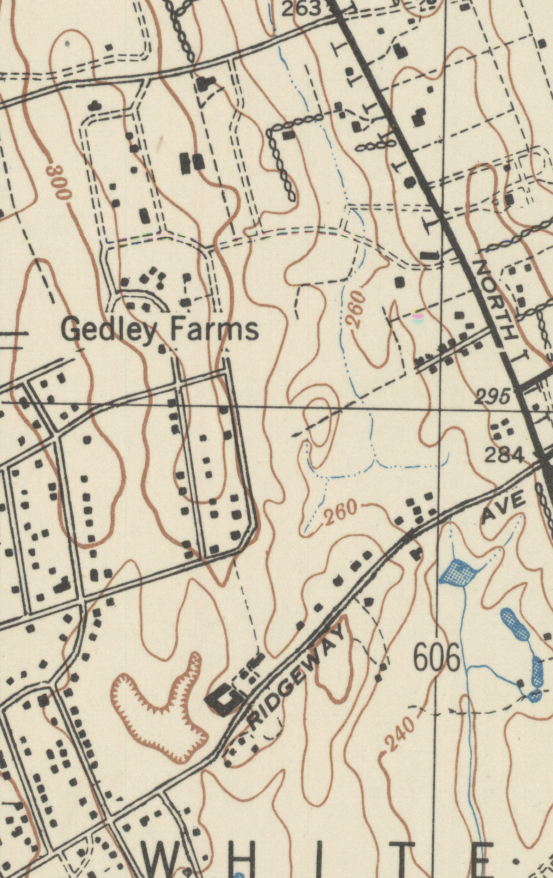|
The French American School Development
The final EIS (Environmental Impact Statement) dated 9/25/2013 described the proposed French-American School of New York (FASNY) development as follows:
"The action involves a proposal by FASNY for the development, along Ridgeway Avenue, of a private pre-K through High School campus, consisting of several buildings with a maximum student capacity of 1200 students with 225 to 250 staff members and an 84 acre Conservancy. The application proposes 230,863 square feet of building area and 428 parking spaces."
The site consists of 129 acres divided by streets into four parcels. The impact statement evaluated the entire site as required by law..
The current FASNY plan appears to be phase one of the above project involving the construction of the high school and the middle school. FASNY has not disclosed where they are planning to build the grammar school. The project would cover 25 acres of the 27 acre parcel A.
The City of White Plains hired Evans Associates Environmental Consulting to evaluate Parcel A.
while the Gedney Association hired is Steven Danzer, PhD.
Both of them found that the parcel was environmentally sensitive.
The parcel has numerous environmental problems.
1. A Buried Stream
A stream runs through the proposed development site (parcel A) and emerges on the south side of Ridgeway at the Westchester Hills Country club where it flows into a pond. The stream appears on an 1899 map of the property but was later buried. The stream runs south Ridgeway and emerges on the South side.
There are three pipes ending at the south side of Ridgeway. Two are storm water drains, the third is the stream. All three run into a pond on the Westchester Hills Property.
The stream runs constantly so although storm water also runs into the pond it is not a storm water pond. It is never close to dry.
2. A Flood Plain
While the Ridgeway Country Club was in operation eight years ago parcel A was a flood plain. After a storm water covered a very large area even though Ridgeway had installed a drain in the middle of the parcel. At times water came close to residences and ran into the sanitary sewer. The tees and holes on parcel A could not be played for days after a storm.
FASNY improved the drainage. Now, even after a large storm the water recedes in a few hours.
Last week, when it rained, there was hardly any water on the golf course. Only the neighboring back yards were flooded.
3. Evidence of wetlands
"The indicators of the presence of a wetland are hydrophytic vegetation (plant life growing in water, soil, or on a substrate that is periodically deficient in oxygen due to excess water), presence of water, and hydric soils (soils saturated, flooded, or ponded, long enough during the growing season to develop anaerobic conditions in the upper profile)" (US ACOE 1987)
The 1947 USGS map shows wetlands on parcel A. Soil at the parcel has been tested and hydric soil was found in numerous places.
Evidence of wetland vegetation was destroyed:
While the golf course was operating there was the usual golf course rough area surrounding the greens. The rough area was covered by brush, tall grass and ferns. It was wet most of the year. A great haven for woodchucks, rabbits, raccoons and occasionally, wild turkeys.
FASNY cleared the brush and cut the tall grass leaving only the trees and moved grass. In some area they used weed killer. The rough is gone and so is the evidence of hydrophytic vegetation that would prove the presence of wetlands.
4. Environmental Violations
The environmentally sensitive designation requires special procedures to be used for clearing and grading operations within the sensitive areas. Mechanically clearing brush as was done by Fasny is not allowed. In addition the property was supposed to be maintained as a golf course. White Plains did not enforce its own laws.
5. The development plan has changed and so has the environmental impact.
The original EIS evaluated the original 129 acre project. However the environmental impact of developing 25 acres of a 27 acre environmentally sensitive parcel has not been evaluated. The City of White Plains as the lead agency for the development is responsible for the environmental impact and should require a revised EIS.
Admonition and advice from New York State Department of Environmental Conservation:
While the Department of Environmental Conservation is charged with issuing regulations regarding the SEQR (State Environmental Quality Review) process, DEC has no authority to review the implementation of SEQR by other agencies. In other words, there are no "SEQR Police."
What happens if an agency does not comply with SEQR?
If an agency makes an improper decision or allows a project that is subject to SEQR to start, and fails to undertake a proper review, citizens or groups who can demonstrate that they may be harmed by this failure may take legal action against the agency under Article 78 of the New York State Civil Practice Law and Rules. Project approvals may be rescinded by a court and a new review required under SEQR. New York State's court system has consistently ruled in favor of strong compliance with the provisions of SEQR
FASNY has spent years trying to circumvent Federal, State and White Plains environmental laws as well as White Plains zoning and building regulations. Their project is obviously too large for this environmentally sensitive site.
Alex Majthenyi
|
1947 USGS Glenville map showing
location of wetlands on Parcel A

USGS 1944 "Glenville" map
USGS 1947 "Glenville" map
USGS 1951 "Glenville" map
USGS 1960 "Glenville" map
USGS 1932 "White Plains" map
USGS 1957 "White Plains" map
USGS 1967 "White Plains" map
UCON USGS Map Collection
For corrections or
comments contact:
Delphi Communications
e-mail: info@delphicom.com
Privacy Policy
copyright 2017
Delphi Communications
|



